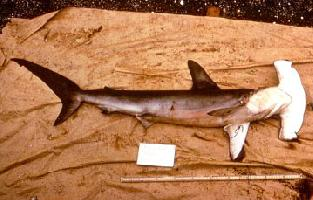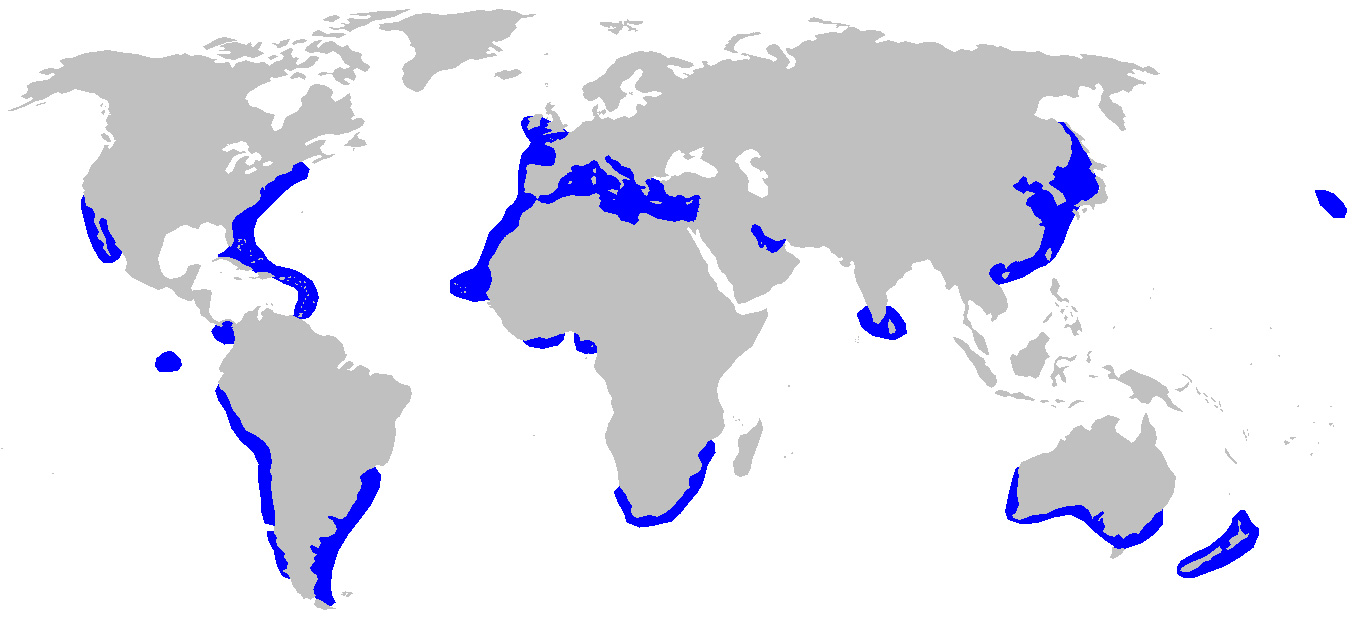
Váhy a míry
| Délka | od 2,5 do 4 m |
|---|
Biologická data
| Počet mláďat | 20 - 40 |
|---|
Stav ohrožení
| Ohrožen |
Popis zvířete
The Smooth Hammerhead (Sphyrna zygaena) is a fascinating species of shark within the family Sphyrnidae, known for its distinctive head shape which is unlike any other creature in the ocean. This species is one of the larger members of the hammerhead shark family, capable of reaching lengths up to 4 meters (13 feet), though most specimens are usually smaller, averaging around 2.5 to 3 meters (8 to 10 feet). The smooth hammerhead is named for the smooth, unnotched shape of its head, or "cephalofoil," which is less arched compared to other hammerhead species, giving it a unique appearance and certain evolutionary advantages.The cephalofoil of the smooth hammerhead is not just for show; it serves several important functions. It enhances the shark's ability to maneuver and turn sharply, even at high speeds, which is crucial for hunting and evading predators. The wide-set eyes give the shark improved visual range and depth perception, allowing it to better detect prey and predators. Additionally, the cephalofoil is equipped with electroreceptors known as ampullae of Lorenzini, making the shark extremely sensitive to the electrical fields generated by other marine organisms. This makes it a formidable hunter, capable of detecting hidden prey buried in the sand or camouflaged against the ocean floor.
The smooth hammerhead is a migratory species, found in temperate and tropical waters all around the globe, from coastal areas and continental shelves to offshore islands. It is known to travel long distances for feeding and breeding, often moving towards the poles in the warmer months and returning to equatorial waters as temperatures drop. This shark prefers cooler water temperatures, which differentiates it from some of its hammerhead relatives.
As a predator, the smooth hammerhead primarily feeds on a wide variety of prey, including fish, cephalopods, and crustaceans. It has also been known to hunt other sharks, including smaller species of hammerhead. The hunting strategy of the smooth hammerhead often involves using its cephalofoil to pin stingrays against the seafloor before consuming them.
Reproduction in smooth hammerheads is viviparous, meaning the sharks give birth to live young after the embryos have developed in the uterus, nourished by a yolk sac placenta. Females give birth to litters ranging from 20 to 40 pups after a gestation period of about 10 to 11 months. The young sharks are born fully formed and are independent from birth, receiving no parental care.
Despite their fearsome appearance and capabilities, smooth hammerheads are not generally considered a significant threat to humans, with very few, if any, confirmed attacks. However, they are often caught as bycatch in commercial fisheries, which, along with targeted shark finning practices, has led to declines in their populations in some areas. The International Union for Conservation of Nature (IUCN) has listed the smooth hammerhead as Vulnerable, indicating that it faces a high risk of extinction in the wild in the medium-term future. Conservation efforts are crucial to ensuring the survival of this unique species, involving the regulation of fishing practices and the protection of critical habitats.
Mapa výskytu

Nové fotografie zvířat
Top 10 zvířat
- Diana monkey (Cercopithecus diana)
- Dolphin gull (Leucophaeus scoresbii)
- Moustached guenon (Cercopithecus cephus)
- Galápagos tortoise (Geochelone nigra complex)
- Stone loach (Barbatula barbatula)
- Japanese spider crab (Macrocheira kaempferi)
- Common house mosquito (Culex pipiens)
- Colossal squid (Mesonychoteuthis hamiltoni)
- Sea urchins (Echinoidea)
- Common reed warbler (Acrocephalus scirpaceus)